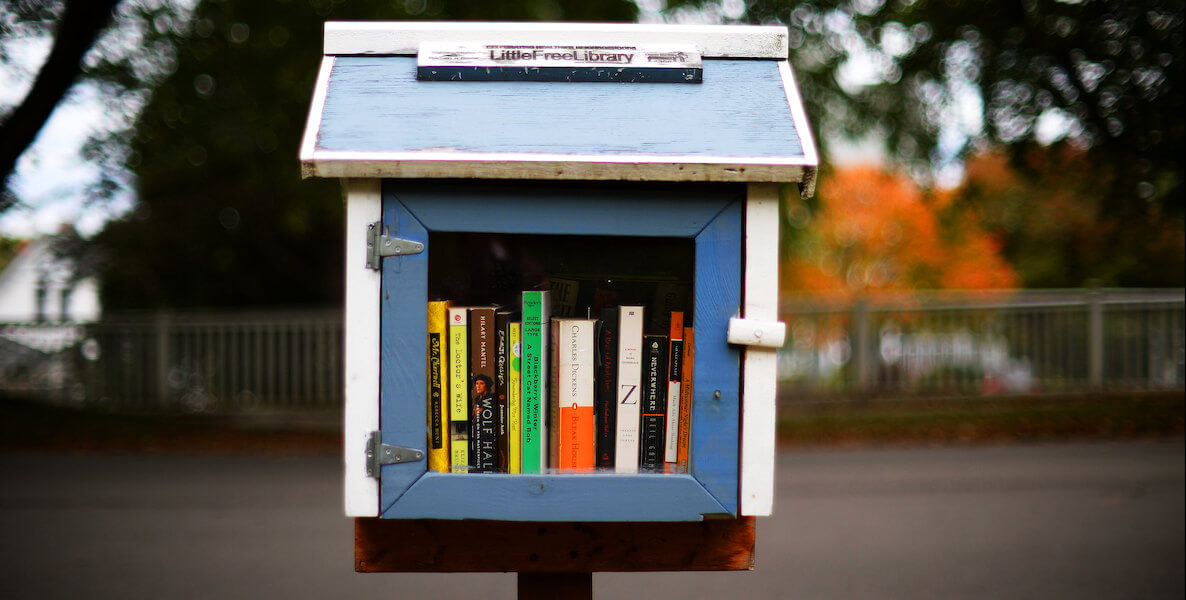After a year of majority-online school, work and activities, picking up a physical book may seem like a thing of the past. But reading is also, of course, a much-needed escape, a way to travel if only through our imagination. At least, that’s one of the goals Darlene Burton is keeping in mind as she prepares to install a new, little free library, in front of her house in Philadelphia’s Harrowgate neighborhood.
“I want kids to go on adventures by reading books,” says Burton, who will be installing a library filled with children’s books.
MORE ON BOOKS, BOOKS, BOOKS 📚
Little free libraries are small, often wooden boxes that look similar to bird houses—but larger—and are packed with books. Started by the late Todd Bol, who created the Little Free Library Movement, these libraries operate with a “take a book, leave a book” model, and have been popping up in neighborhoods throughout Philly and across the United States.
As their name implies, the libraries are little and free for public use. And with just a few tools and tips, anyone can make one. Here are some steps to get started:
Supplies needed for little free libraries 🪚
- Wood
- Saw (jigsaw is recommended)
- Drill (automatic is recommended)
- Shovel
- Paint
- Permit (depending on placement)
- Books
- Readers
How to build little free libraries in nine steps
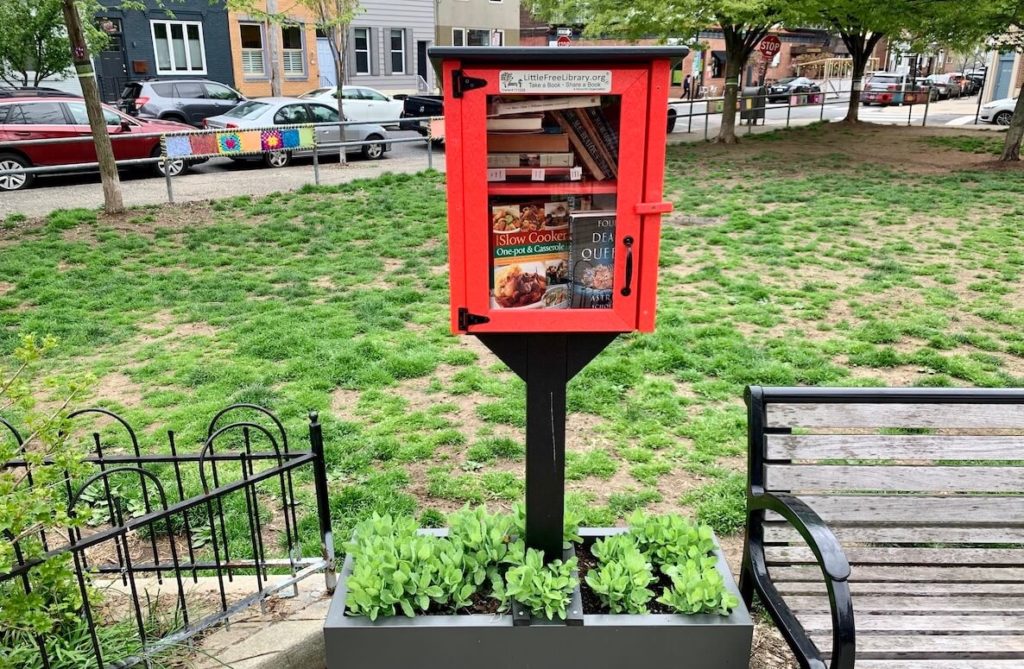
1. Find an interested neighborhood or group
Before starting a little free library, you’ll want to think about where it will go and who it will benefit. Consider neighborhoods that are not within walking distance from a Free Library of Philadelphia, and ask people for permission, or feedback, on placement.
If you do not live in the neighborhood where you’ll be building the library, make sure it benefits, not burdens, the community. Talk to community members first, and have a plan for how you will maintain the library.
A little free library building session took place at Harrowgate Park on a recent Saturday—as part of an initiative called the Trust Project, a collaboration between Friends of Harrowgate Park, Creative Resilience Collective (CRC), and Mural Arts.
The organizations consulted community members before the build, which was essential to maintaining trust in the neighborhood, says Marissa Rumpf, president of Friends of Harrowgate Park.
“The little libraries were an idea that came not from Mural Arts or from CRC, but from the neighbors ourselves,” adds Rumpf. “We thought about what the kids and the neighbors in our community really need, and we kept coming back to the idea of access to books and literature, and literacy, which goes along with other programming that park neighbors have initiated.”
2. Assemble a group
Because the library will be for public use, you may want to have a group of people involved in building it and setting it up. Consider holding a little free library building session at your local park or in your own yard.
3. Look up design ideas 🎨
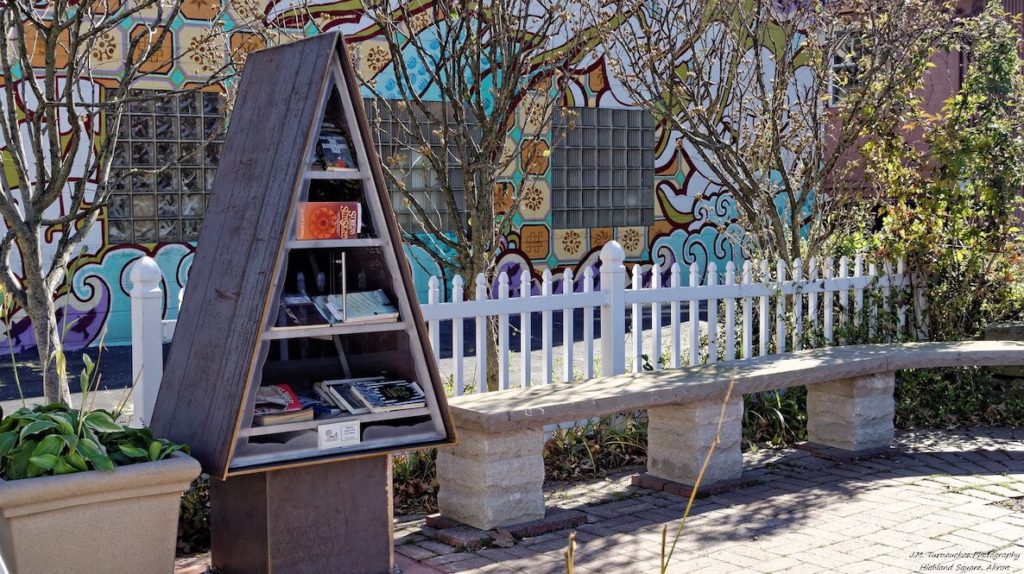
Little Free Library is a national brand at this point, and the organization offers design inspo and other set-up tips on their website. You can also buy their book, “Little Free Libraries & Tiny Sheds: 12 Miniature Structures You Can Build,” which details how to put different design options together.
4. Gather your tools, and get to work 🔨
You don’t need a full woodshop to build a little free library, but you’ll want a few basic tools to start out.
Carly Najera teaches art and tech ed at Bensalem High School—including woodshop—and led the recent workshop at Harrowgate Park. “You can always cut things by hand,” Najera says. “It just takes a long time. Do you have the patience to sit there and cut things with just a regular saw?”
If not, you’ll be more efficient with a jigsaw, she says. And if you don’t have tools on hand, you can rent some for a day from one of Philly’s tool libraries, like Tacony Tool Library and West Philly Tool Library for a small fee. (West Philly Tool Library asks people to pay a sliding scale membership between $20 and $50 a year, based on income.)
Side note: Not so different from free little libraries, tool libraries are places where members can rent a tool for a project, without committing to a full purchase. Unlike little free libraries, where you “take a book, leave a book,” however, if you rent a specific tool, you have to give that same tool back.
5. Start decorating!
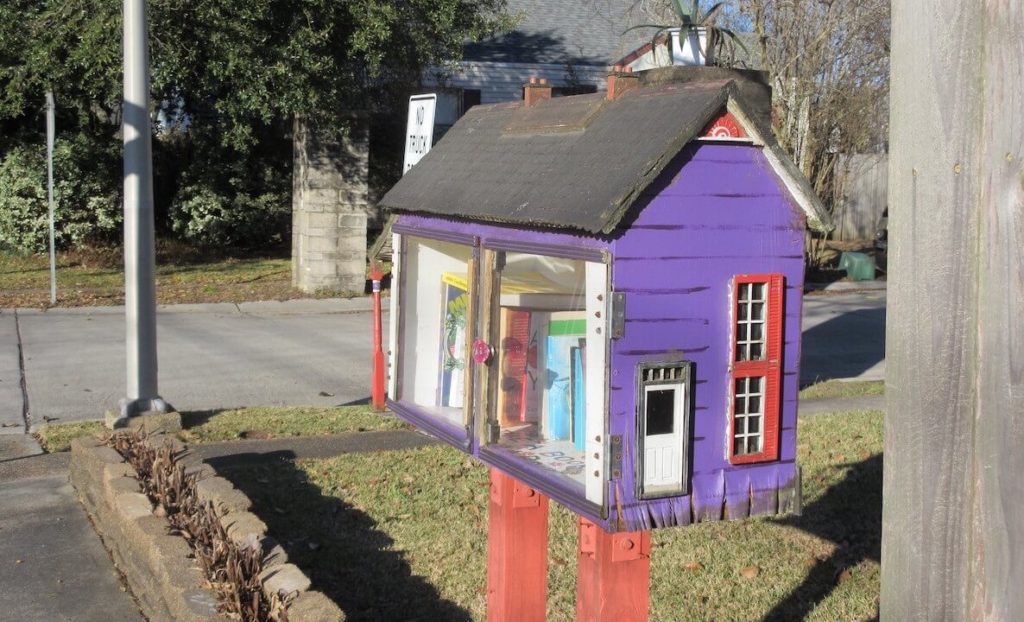
Najera says painting libraries is a way more popular activity than constructing them. Paint and decor aren’t necessary for the functionality of your library, but are nonetheless a way to personalize your library to make it special to yourself and the community it serves. So get creative!
Consider adding features like a community bulletin board to the exterior of the library, or painting it with meaningful words or phrases that represent your community.
6. Get permission—or a city permit—before you install
If you are placing your little free library on city property, like a park, you will need to get a zoning permit first. You can apply for a permit, here.
If that sounds like too much work, consider placing the library on private property—like your or a neighbor’s front yard. (If placing a library in a neighbor’s yard, they’ll need to give you the “OK,” first, obviously.) In Harrowgate, Burton offered to set up her library—which is part of the Trust Project—in her yard not only to avoid the permit process, but to help her community.
“I always try to promote literacy in the community,” Burton says. “I believe the more knowledge you have, the better off you are in life, because we all know knowledge is power.”
7. Install
If your library is outside, install it into the ground securely. Little Free Library’s website has tips for how to do this with a wooden post. You can use this method for installing your library into a planter, as well.
If your library is inside, you do not need to install it into the ground.
8. Host a book drive, donate books 📚

Once the library is in place, it’s time to fill it with books! Ask your neighbors if they have old—or new!—books that they are willing to donate, and look through your own shelves as well.
After you’ve gathered an initial set of books, the hope is that the supply will grow and change over time.
“The idea is: Take a book, give a book, when you’re done you put it back, find something else,” Najera says. “I always feel like people have extra books lying around. I know I do.”
In Harrowgate, they will be filling the libraries with a selection of English and Spanish books, to cater to the neighborhood’s Spanish-speaking population.
9. Spread the word, and start reading!
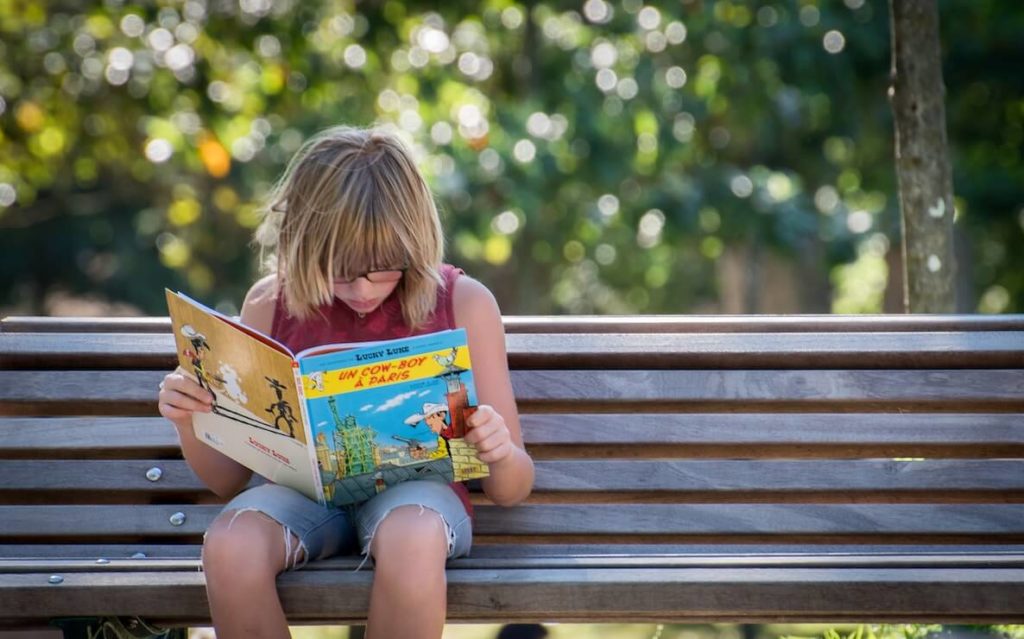
Once the library is built, decorated, installed, and stuffed with books, it’s time to start using it! Remind your neighbors that it exists, and take advantage of it yourself. You can also up your community engagement efforts by reading books with others, and helping your younger neighbors learn to read.
Correction: An earlier version of this piece omitted the name of Todd Bol, who launched the movement, and misspelled Marissa Rumpf’s last name.
More Citizen how-to guides you might find useful
- How to start a community fridge
- How to organize a street cleanup in your neighborhood
- How to start your own voter registration drive
- How to get free tax preparation


